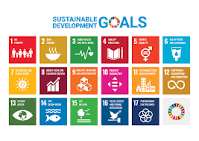HOW MODERN EDUCATION IS CHALLENGING OLD BELIEFS IN RURAL NEPAL
Modern education has emerged as a powerful force of change in rural Nepal, gradually reshaping long-held beliefs and cultural practices that have defined community life for generations. While traditional knowledge and customs remain deeply valued, the influx of new ideas through formal schooling, technology, and exposure to broader worldviews is prompting rural Nepalis to question, adapt, and sometimes reject old beliefs. This dynamic interaction between education and tradition reveals the complexities of social transformation in Nepal’s countryside.
In many rural areas, traditional
beliefs are intricately woven into daily life, influencing everything from
social roles and gender norms to health practices and spiritual understandings.
These beliefs often dictate behaviors and decision-making within families and
communities, sustaining a continuity that fosters identity and social cohesion.
However, some of these customs can also perpetuate inequality, superstition, or
practices that limit opportunities, especially for women and marginalized
groups.
Modern education introduces new
frameworks for thinking—scientific reasoning, critical inquiry, and knowledge
about human rights, health, and governance. Schools provide children and young
adults with tools to understand the world differently from their parents and
elders. Learning about subjects like biology, history, and civic responsibility
encourages questioning of practices such as child marriage, caste
discrimination, and gender bias. This intellectual empowerment can foster
awareness of alternatives and motivate demands for social change.
The impact of education is visible in
various ways. For example, increased literacy rates contribute to greater
access to information through media and the internet, broadening perspectives
beyond local traditions. Educated youth often become agents of change within
their families and communities, advocating for gender equality, environmental
conservation, and democratic participation. They challenge superstitions and
harmful customs by promoting evidence-based health practices and social
reforms.
However, the encounter between modern
education and traditional beliefs is not without tension. In some cases, older
generations view new ideas as threats to cultural identity or moral values,
leading to resistance or conflict. There can be a perception that education
alienates youth from their roots or undermines respect for elders and communal
harmony. Balancing respect for heritage with the benefits of modern knowledge
requires sensitive dialogue and inclusive approaches.
Moreover, education itself faces
challenges in rural Nepal, including limited resources, language barriers, and
the relevance of curriculum to local contexts. Ensuring that education empowers
rather than alienates requires curricula that respect cultural diversity while
encouraging critical thinking and social awareness. Community involvement in
education can bridge gaps and foster mutual understanding.
In conclusion, modern education is a
catalyst that challenges old beliefs in rural Nepal, opening pathways for
social transformation and empowerment. While it questions certain traditions,
it also offers opportunities to preserve cultural identity in ways that align
with human rights and development. The evolving relationship between education
and tradition highlights the potential for Nepal’s rural communities to adapt
thoughtfully to change, blending the wisdom of the past with the promise of the
future.

Comments
Post a Comment